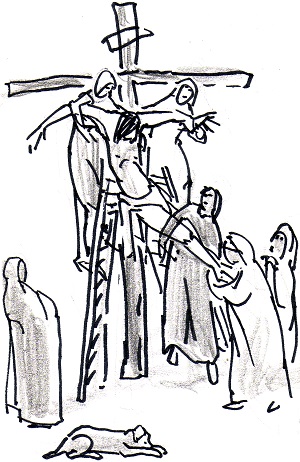
“It is fulfilled” (John 19:30).
Is 52:13—53:12; Heb 4:14-16; 5:7-9; Jn 18:1—19:42
Good Friday of Holy Week
Of all the questions we might ask about the impact of the Jesus community on history, the first ought to be why it survived at all. Why did it emerge from the countless movements, religions and charismatic impulses passing through the ancient world to fire the imaginations of poets, artists and mystics and end up influencing global culture to the extent that it has?
How did an obscure hill country Jewish preacher leave such a profound imprint on the collective psyche of the world, attracting billions of adherents and shaping even the arguments of skeptics who dismiss him?
Apart from the theological answer that he was God incarnate come to save the world, another case might be made for the symbol that came to characterize the life and death of Jesus of Nazareth. The cross he died on placed him at the intersection of human despair and divine response. The body of Jesus hangs vertically and reaches horizontally. He is fixed in the human imagination at the crossroads of hope and despair, love and death, locked in the universal question the cross poses for all of us: Love or Death, which one is ultimate?
Jesus’ violent death, a human being sacrificed at the height of his powers and in the fullness of his freedom, is what gives the cross its power. No hapless victim, Jesus dies for love when he might have fled. He could have saved himself, but saved us instead, emptying his life into ours so completely that life and death are redefined by love. This is what a human being looks like. This is the image and likeness of God, revealed to the world on a cross.
The sign of the cross is therefore the simplest, most complete and portable catechesis we have. By making it over our bodies, head to heart, shoulder to shoulder, we bless our lives in relationship to God and in outreach to one another. It is the perfect prayer for Good Friday.